Tourmaline: Types and Their Differences
Tourmaline is a complex silicate mineral group known for its remarkable variety of colors and its wide range of applications. It is comprised of several minerals that share a common crystal structure but differ in their chemical composition. This variation results in a multitude of color options, making tourmaline a popular choice in the gemstone market. The mineral’s name derives from the Sinhalese word “turmali,” which means “mixed gemstones” – a nod to its diverse range of hues.

General Characteristics
Tourmaline crystals are characterized by their unique trigonal crystal system, where the crystal structure is shaped like a six-sided prism. One of the mineral’s most notable features is its color variability, which can range from the most common hues like pink and green to rarer shades such as blue, red, and even colorless. This extensive color range is due to the presence of various trace elements, including iron, manganese, and chromium, which influence the stone’s coloration. Additionally, tourmaline can exhibit pleochroism, meaning it can show different colors when viewed from different angles.
Historical and Cultural Significance
Historically, tourmaline has held a special place in various cultures due to its captivating colors and perceived metaphysical properties. In ancient Egypt, it was believed that tourmaline’s vibrant hues were a result of the gem’s journey through a rainbow, symbolizing its connection to divine forces. The gemstone also features prominently in the lore of indigenous cultures in Brazil, where it has been used in traditional jewelry and as a talisman. During the late 19th century, tourmaline gained significant attention in the gem industry due to its striking colors and the discovery of new varieties, which contributed to its enduring appeal and cultural value. Today, it remains a favorite among gem enthusiasts and collectors for its versatility and beauty.
Contents
- Types of Tourmaline
- Color Variations and Their Causes
- Tourmaline in Gemology
- Tourmaline in Jewelry
- Tourmaline’s Geological Occurrence
- 1. Pegmatites
- 2. Metamorphic Rocks
- 3. Granites
- 4. Alluvial Deposits
- 5. Hydrothermal Veins
- Major Mining Locations
Types of Tourmaline
Tourmaline is a diverse mineral group with numerous varieties, each distinguished by its unique chemical composition and color. Here are some of the main types of tourmaline and their characteristics:
1. Elbaite
 Tourmaline var. Elbaite with Quartz & Lepidolite on Cleavelandite
Tourmaline var. Elbaite with Quartz & Lepidolite on Cleavelandite
Elbaite is one of the most well-known species within the tourmaline group, renowned for its vibrant colors. It can exhibit a range of hues including pink, green, blue, and even multicolored varieties. Notably, elbaite is often found in striking bi-color or tri-color crystals, such as the popular watermelon tourmaline, which showcases a pink center with green outer layers.
2. Schorl
 Schorl, Foitite, Fluorite on Feldspar
Schorl, Foitite, Fluorite on Feldspar
Schorl is the most common and widespread type of tourmaline. It is typically black and opaque, and is often used in industrial applications rather than as a gemstone. Schorl’s dark coloration is due to its high iron content. It is frequently found in metamorphic rocks and can form in well-defined crystal shapes.
3. Dravite
 dravite brown tourmaline
dravite brown tourmaline
Dravite is a brown to dark brown variety of tourmaline. It is named after Drave, a region in Austria where it was first identified. This type is notable for its earthy tones and is less common as a gemstone but is significant in mineralogical studies.
4. Indicolite

Indicolite is a rare and striking blue to blue-green variety of tourmaline. Its color ranges from a deep, intense blue to a lighter, more turquoise hue. The blue color is primarily due to the presence of iron in its crystal structure. Indicolite is valued for its vibrant and captivating color, though it is less common than other tourmaline types.
5. Paraiba Tourmaline

Paraiba tourmaline is a highly prized and rare type of tourmaline known for its electric blue to neon green colors. Discovered in the Brazilian state of Paraíba, this tourmaline is distinguished by its vivid, glowing hues, which are due to the presence of copper and, in some cases, manganese. Paraiba tourmaline’s rarity and striking appearance make it one of the most sought-after and expensive varieties.
6. Watermelon Tourmaline

Watermelon tourmaline is a special variety of elbaite that features a pink center surrounded by a green outer layer, resembling the colors of a watermelon. This unique color zoning occurs within a single crystal and is highly valued for its distinct and eye-catching appearance.
7. Kunzite

While not always classified as a tourmaline, kunzite is often associated with the tourmaline family due to its similar appearance. Kunzite is a pink to lilac variety of spodumene, often mistaken for a tourmaline due to its color and transparency. It is named after gemologist George Frederick Kunz and is prized for its delicate pink hues.
8. Liddicoatite

Liddicoatite is a rare variety of tourmaline named after gemologist Richard T. Liddicoat. It is distinguished by its vivid colors, including bright pinks, greens, and blues. Liddicoatite is noted for its unique pleochroism, where the color can vary when viewed from different angles.
Each type of tourmaline offers its own unique beauty and characteristics, contributing to the mineral’s popularity and versatility in both gemstone and industrial applications.
Color Variations and Their Causes
Tourmaline’s broad color spectrum is one of its most striking features. The diverse hues of this gemstone are primarily due to variations in its chemical composition, the presence of trace elements, and the interplay of light. Here’s an overview of the key color variations in tourmaline and the causes behind them:
 Different Colors of Tourmalines
Different Colors of Tourmalines
1. Pink and Red Tourmaline
- Causes: The pink to red hues in tourmaline are primarily due to the presence of manganese. Manganese ions replace some of the aluminum ions in the crystal structure, resulting in these warm colors. The intensity of the pink or red can vary depending on the concentration of manganese and the presence of other trace elements.
2. Green Tourmaline
- Causes: The green color in tourmaline is usually due to the presence of chromium and/or vanadium. These elements are responsible for producing a range of green shades, from light and pastel greens to deeper forest greens. The concentration and interaction of these trace elements within the crystal lattice determine the specific shade of green.
3. Blue Tourmaline
- Causes: Blue tourmaline, or indicolite, owes its color to iron. Iron ions in the crystal structure absorb certain wavelengths of light, resulting in various shades of blue. The concentration of iron and its oxidation state can affect whether the blue is deep and intense or lighter and more turquoise.
4. Paraiba Tourmaline
- Causes: The vibrant blue to green colors of Paraiba tourmaline are due to the presence of copper, sometimes in combination with manganese. Copper imparts a bright, neon-like quality to the gemstone, creating the highly sought-after electric blue and green hues. The unique combination of copper with other trace elements gives Paraiba tourmaline its distinctive and intense coloration.
5. Watermelon Tourmaline
- Causes: The striking pink center with a green outer layer in watermelon tourmaline is due to the sequential incorporation of different trace elements during the crystal’s growth. Initially, manganese predominates, producing the pink color. As the crystal continues to form, the presence of iron and possibly other elements leads to the formation of the green outer layer. This color zoning occurs within a single crystal, resulting in the characteristic watermelon-like appearance.
6. Brown Tourmaline
- Causes: Brown tourmaline, such as dravite, gets its color from the presence of iron in its crystal structure. Iron can cause a range of brown shades, from light tan to deep, dark brown, depending on its concentration and oxidation state.
7. Colorless Tourmaline
- Causes: Colorless tourmaline, while rare, occurs when there are very low concentrations of trace elements. Without significant amounts of colored ions, the crystal remains transparent and colorless.
8. Multicolored Tourmaline
- Causes: Some tourmaline crystals exhibit multiple colors within a single gem. These multicolored varieties can result from complex interactions between different trace elements during the crystal’s formation. For example, a crystal might show a gradient from pink to green or blue to green, reflecting the changing concentrations of trace elements over time.
In summary, the color variations in tourmaline are largely a result of the presence and concentration of trace elements, as well as the crystal’s internal structure. This diversity in coloration makes tourmaline one of the most versatile and aesthetically appealing gemstones.
Tourmaline in Gemology

1. Identification and Classification
In gemology, tourmaline is identified by its unique crystalline structure and chemical composition. It belongs to the cyclosilicate group and has a trigonal crystal system. Gemologists use various techniques to classify tourmaline, including:
- Spectroscopy: To determine the presence of specific trace elements and confirm the gemstone’s identity.
- Microscopy: To observe internal features, inclusions, and color zoning.
- Refractive Index: Tourmaline’s refractive index varies between 1.62 and 1.64, which helps in distinguishing it from other gemstones.
2. Color Variability
One of tourmaline’s defining features is its wide range of colors, which is a result of different trace elements and structural variations. Gemologists study these colors to classify different varieties of tourmaline, such as:
- Elbaite: Known for its vivid hues, including pink, green, and blue.
- Schorl: Typically black, used for industrial purposes rather than as a gemstone.
- Paraiba Tourmaline: Famous for its neon blue and green colors due to copper content.
3. Pleochroism
Tourmaline exhibits pleochroism, meaning it can show different colors when viewed from different angles. This property is useful in gemological identification and adds to the gemstone’s visual appeal.
4. Stability and Durability
Tourmaline is relatively durable, with a hardness of 7 to 7.5 on the Mohs scale, making it suitable for various types of jewelry. However, it can be sensitive to sudden temperature changes and should be handled carefully to avoid damage.
Tourmaline in Jewelry

1. Design and Setting
Tourmaline’s wide color range allows jewelers to create diverse and striking designs. It is used in various types of jewelry, including:
- Rings: Tourmaline’s vibrant colors make it a popular choice for statement rings.
- Earrings: The gemstone’s brilliance and variety can enhance the look of earrings, from studs to drop designs.
- Necklaces and Bracelets: Tourmaline is used in both casual and high-end designs, often set in gold or platinum to complement its colors.
2. Cutting and Shaping
The versatility of tourmaline allows for a variety of cuts and shapes, including:
- Brilliant Cut: Enhances the gem’s brilliance and is often used for larger, high-quality stones.
- Rose Cut: Offers a vintage aesthetic and can highlight the gemstone’s color and clarity.
- Cabochon Cut: Smooth, rounded cut used for opaque or less transparent tourmaline varieties, showcasing their color and internal features.
3. Popular Varieties
Certain varieties of tourmaline are particularly prized in jewelry:
- Paraiba Tourmaline: Highly sought after for its rare, neon-blue to green colors.
- Watermelon Tourmaline: Valued for its unique pink and green color zoning.
- Rubellite Tourmaline: A red or pink-red variety that is often used in high-end jewelry pieces.
4. Market Value
Tourmaline’s value depends on several factors, including color, clarity, cut, and carat weight. Rare varieties like Paraiba tourmaline command high prices, while more common types like green and pink tourmaline are more accessible. The gemstone’s appeal is enhanced by its natural beauty and the unique characteristics of each piece.
In summary, tourmaline’s diverse colors and forms make it a versatile and desirable gemstone in the world of gemology and jewelry. Its ability to be cut into various shapes and set into different types of jewelry further contributes to its popularity among gem enthusiasts and consumers alike.
Tourmaline’s Geological Occurrence

Tourmaline is a widespread mineral with a notable presence in various geological environments. Its occurrence is linked to several types of geological formations and processes. Here’s an overview of where tourmaline is commonly found and the geological conditions that contribute to its formation:
1. Pegmatites
Occurrence: Tourmaline is frequently found in pegmatites, which are coarse-grained igneous rocks that form during the final stages of magma crystallization. Pegmatites are rich in rare minerals and often contain large crystals.
Geological Conditions: The formation of pegmatites occurs when magma cools slowly, allowing for the growth of large mineral crystals. Tourmaline crystals in pegmatites can be quite large and exhibit a range of colors, including some of the most prized varieties like Paraiba and watermelon tourmaline.
Notable Locations: Significant pegmatite deposits include locations in Brazil, Madagascar, and Maine in the United States.
2. Metamorphic Rocks
Occurrence: Tourmaline is also found in metamorphic rocks, which form under high pressure and temperature conditions from pre-existing rocks. It is commonly associated with schists and gneisses.
Geological Conditions: In metamorphic environments, tourmaline can form from the alteration of boron-rich minerals. It often occurs as a result of regional metamorphism, where sedimentary rocks are subjected to intense pressure and heat.
Notable Locations: Tourmaline-bearing metamorphic rocks can be found in areas like the Alps, the Himalayas, and parts of the Canadian Shield.
3. Granites
Occurrence: Tourmaline can be found in granites, particularly in those that are highly evolved or rich in boron. In granitic rocks, tourmaline often forms as a minor accessory mineral.
Geological Conditions: The presence of boron in granites, often due to the involvement of fluids during the rock’s formation, facilitates the formation of tourmaline. This mineral may also occur in associated pegmatitic veins within granite bodies.
Notable Locations: Notable granitic occurrences of tourmaline can be found in regions like the granite batholiths of Western Australia and parts of the Rocky Mountains in the United States.
4. Alluvial Deposits
Occurrence: Tourmaline can be transported and deposited by natural processes such as erosion and sedimentation. In alluvial deposits, tourmaline is often found as rounded or fragmented grains.
Geological Conditions: Erosion of host rocks containing tourmaline can lead to its accumulation in riverbeds, beaches, and other sedimentary environments. This often results in placer deposits where tourmaline is found alongside other minerals.
Notable Locations: Alluvial deposits of tourmaline are reported in various regions, including parts of Brazil and Africa, where weathered pegmatites or metamorphic rocks have contributed to these deposits.
5. Hydrothermal Veins
Occurrence: In some cases, tourmaline forms in hydrothermal veins, which are created when mineral-rich fluids flow through fractures in rocks and precipitate minerals as they cool.
Geological Conditions: The presence of boron in hydrothermal fluids can lead to the formation of tourmaline. These veins can be associated with other minerals such as quartz and feldspar.
Notable Locations: Hydrothermal vein deposits of tourmaline are found in various locations worldwide, including certain mining districts in the United States and parts of Australia.
Tourmaline’s geological occurrence spans a range of environments from pegmatites and metamorphic rocks to granites, alluvial deposits, and hydrothermal veins. Its formation is closely linked to the presence of boron and other trace elements, which influence its color and crystal structure. This versatility in occurrence contributes to tourmaline’s wide availability and the diverse range of colors and types found in the mineral.
Major Mining Locations
Tourmaline is mined in various regions across the globe, each known for producing different types of tourmaline with unique colors and characteristics. Here are some major mining locations and the types of tourmaline they produce:
 This selection of crystals represents only a fraction of the production we observed during our brief visit to the Cruzeiro mine. The multicolored specimens include hues ranging from rubellite to green, often with black terminations. Photo by Andrew Lucas/GIA, courtesy of Cruzeiro mine.
This selection of crystals represents only a fraction of the production we observed during our brief visit to the Cruzeiro mine. The multicolored specimens include hues ranging from rubellite to green, often with black terminations. Photo by Andrew Lucas/GIA, courtesy of Cruzeiro mine.
1. Brazil
Types of Tourmaline: Brazil is renowned for its diverse and high-quality tourmaline deposits, including:
- Paraiba Tourmaline: Known for its electric blue to neon green colors, primarily found in the state of Paraíba. This rare variety is highly prized for its vibrant hues, which are due to copper content.
- Watermelon Tourmaline: Found in several locations within Brazil, including the state of Minas Gerais. This variety features a pink center with a green outer layer.
- Other Varieties: Brazil also produces a wide range of other tourmaline colors, including pink, red, green, and blue.
Notable Locations: Key mining regions include Paraíba, Minas Gerais, and Espírito Santo.
2. Madagascar
Types of Tourmaline: Madagascar is famous for its rich tourmaline deposits, including:
- Elbaite Tourmaline: Known for its vivid colors, including pink, green, and blue. Madagascar produces a significant amount of high-quality elbaite.
- Watermelon Tourmaline: Also found in Madagascar, with striking color zoning similar to Brazilian specimens.
Notable Locations: Major mining areas include the regions of Ihosy and Vatomandry.
3. United States
Types of Tourmaline: The United States has several significant tourmaline deposits, particularly in:
- Maine: Known for its high-quality elbaite tourmaline, including vivid greens, pinks, and bi-color specimens. The famous mines include the Mount Mica, the Newry, and the Paris mines.
- California: Produces a variety of tourmalines, including the highly prized blue-green and watermelon tourmaline. Notable mines include the Himalaya Mine and the Tourmaline King Mine.
Notable Locations: Maine’s pegmatite fields and California’s San Diego County and Riverside County areas.
4. Afghanistan
Types of Tourmaline: Afghanistan is known for producing:
- Elbaite Tourmaline: Especially in shades of blue and green. Afghan tourmaline is often noted for its vibrant and varied hues.
Notable Locations: The Panjshir Valley and the Nuristan Province are notable sources.
5. Pakistan
Types of Tourmaline: Pakistan is known for:
- Elbaite Tourmaline: Including vibrant pink, green, and blue varieties. Pakistani tourmaline is often found in large crystals and is noted for its high quality.
Notable Locations: The Shigar Valley in Gilgit-Baltistan and the region around the town of Peshawar.
6. Zimbabwe
Types of Tourmaline: Zimbabwe’s notable tourmaline varieties include:
- Elbaite Tourmaline: Known for its vivid colors and sometimes exceptional crystal size.
Notable Locations: The Umba Valley is a key mining region for tourmaline in Zimbabwe.
7. Sri Lanka
Types of Tourmaline: Sri Lanka is known for:
- Elbaite Tourmaline: Particularly pink and green varieties, often used in traditional Sri Lankan jewelry.
Notable Locations: Key mining regions include the Ratnapura area, known as the “City of Gems.”
8. Australia
Types of Tourmaline: Australia is known for:
- Schorl: The black variety of tourmaline, often found in various mining districts.
- Other Varieties: Australia also produces some elbaite and other types of tourmaline.
Notable Locations: Key mining areas include the New South Wales and Queensland regions.
Tourmaline is mined in numerous locations around the world, with each region producing different types and colors of the gemstone. Brazil is especially famous for its Paraiba and watermelon tourmaline, while Madagascar offers a variety of elbaite colors. The United States, Afghanistan, Pakistan, Zimbabwe, Sri Lanka, and Australia also contribute significant amounts of tourmaline, each adding to the mineral’s global appeal and diversity.
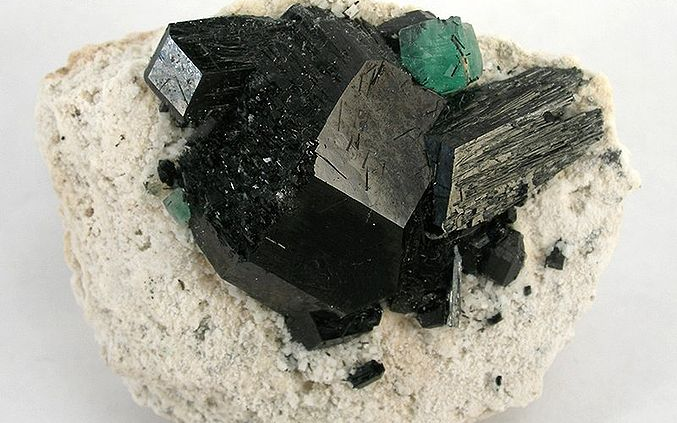
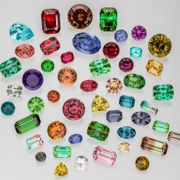
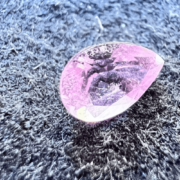
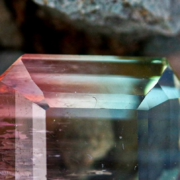
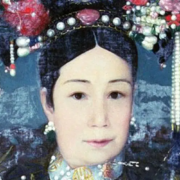
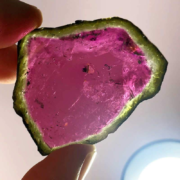
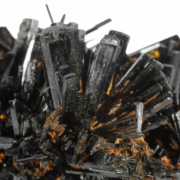


Leave a Reply
Want to join the discussion?Feel free to contribute!